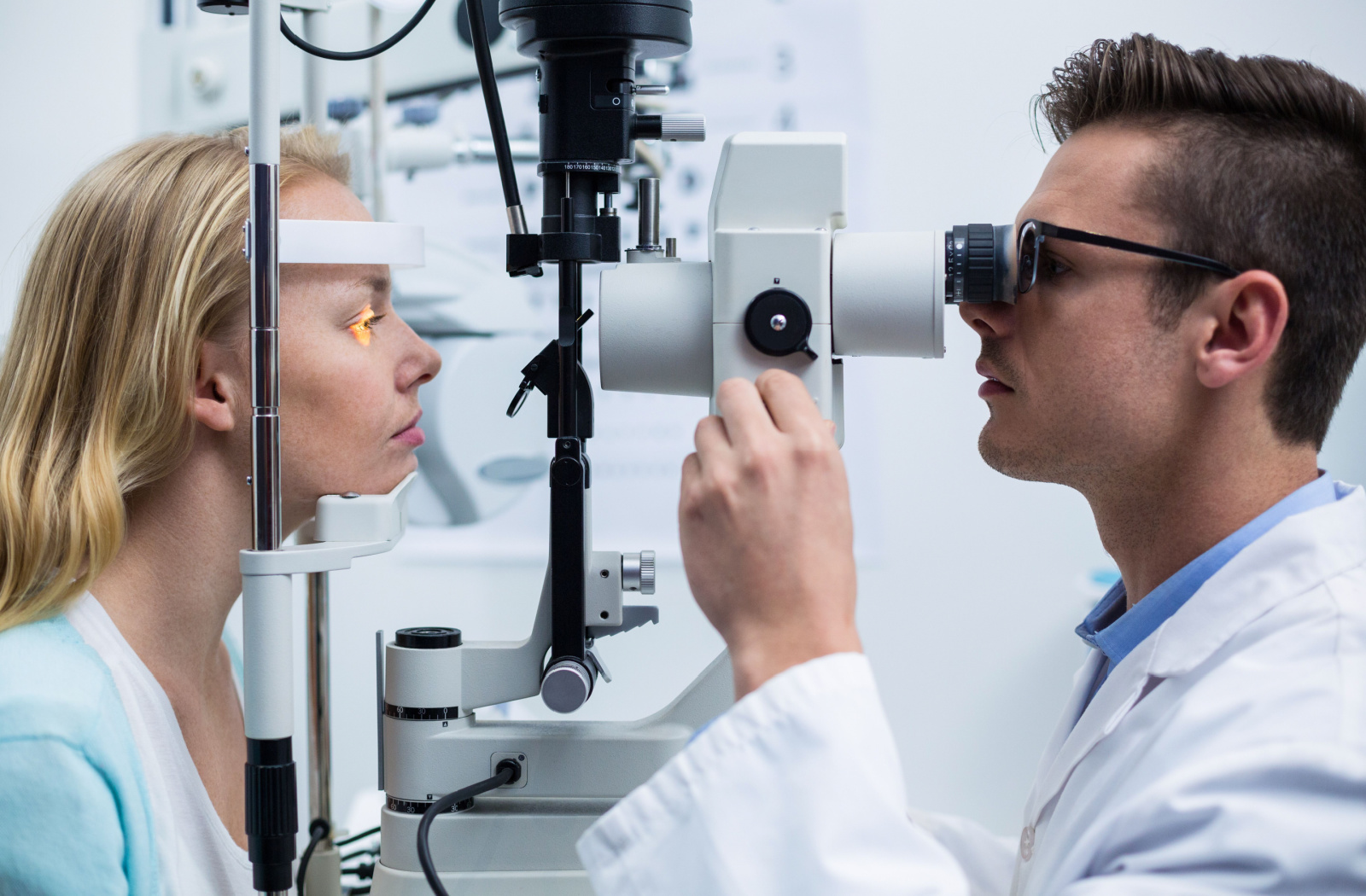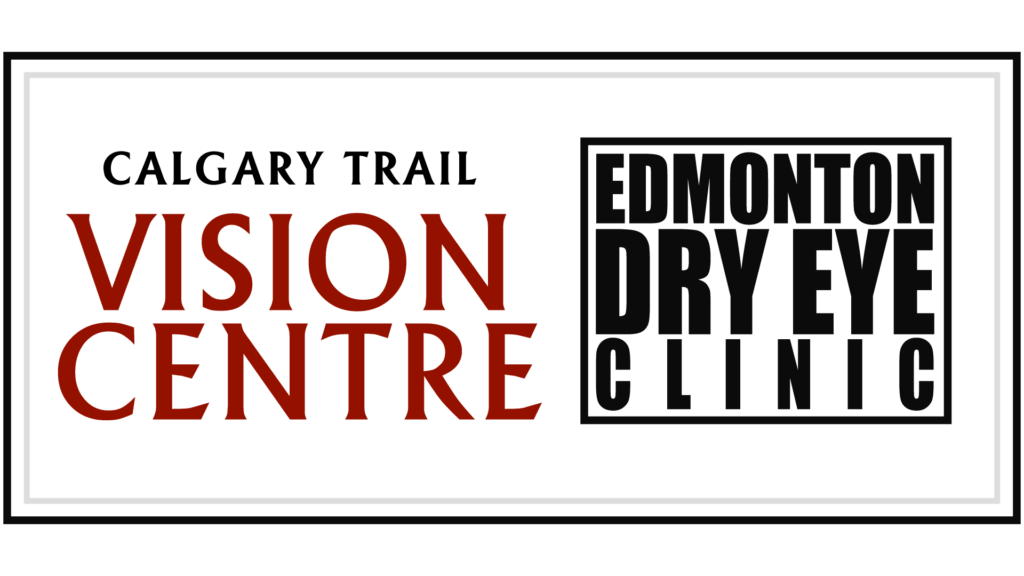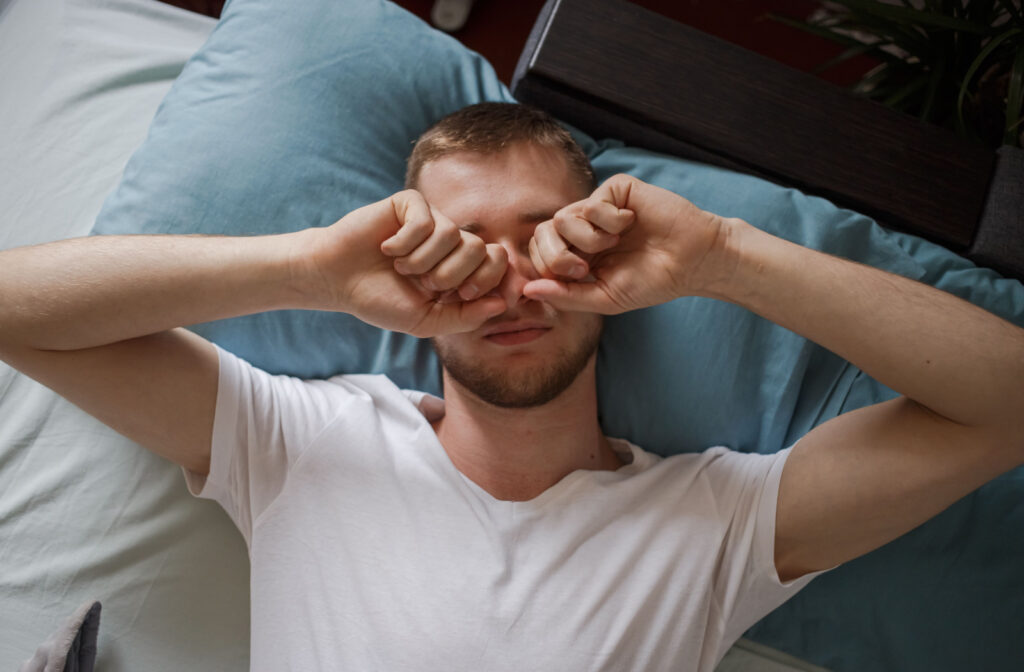When you wake up with a feeling of grittiness or irritation in your eyes, you may be experiencing dry eye—a common eye condition that affects many people in Edmonton. There are several reasons why you might be waking up with dry eye symptoms.
Dry eyes in the morning can be caused by nocturnal lagophthalmos, a condition where your eyes don’t fully close while you sleep, but it can also be caused by dehydration, medications, or a dry sleeping environment.
If you experience dry eyes, you should schedule an eye exam to receive a proper diagnosis and get treatment that addresses the specific cause of your symptoms.
What Is Dry Eye?
Your eyes are an incredibly complex organ with many different tiny parts, each with its own specific purpose. And an important part of how your eyes function is your tear film.
Your tear film helps protect, hydrate, and moisturize your eyes, all while flushing away contaminants. It’s made of 3 layers:
- The innermost layer, also known as the mucin layer, is responsible for helping your tear film adhere to the surface of your eye.
- The middle layer, known as the aqueous layer, is the thickest layer and contains water and proteins—it helps provide hydration and nutrition to your cornea.
- The outermost layer is the lipid layer, which is composed of oils. This layer helps prevent the evaporation of tears and maintain your tear stability.
When a problem develops with your tear film, your eyes may not be properly protected anymore. Your tears may evaporate too quickly, or there may not be enough produced, leaving you with dry eye symptoms like burning, gritty sensations in your eye.
What Causes Dry Eye?
Dry eye is often caused by a problem with your meibomian glands called meibomian gland dysfunction (MGD). Your meibomian glands produce the oils for your tears that help stop them from evaporating too quickly. But if they become blocked, plugged, or affected in any way, it can limit the production of those oils, leading to increased tear evaporation.
Dry eye can also be caused by:
- Aging
- Medical conditions, including diabetes, rheumatoid arthritis, and thyroid disorders
- Some medicines, including antihistamines, decongestants, and antidepressants
- Environmental factors, like too much humidity, dust, or smoke in the air
- Wearing improperly-fitting contact lenses
- Trauma or recent surgery to the eye
Because there are so many different potential causes, it’s important to visit an eye doctor for dry eye treatment. We can find the specific cause of your symptoms and provide tailored treatments to help you get relief.
What Is Nocturnal Lagophthalmos?
Nocturnal lagophthalmos is a condition that can cause your eyes to remain partially open while you’re asleep. When your eyes are partially open overnight, your tear film can be more likely to evaporate, leaving your eyes dried out in the morning.
What Else Can Cause Morning Dry Eyes?
Morning dry eyes could also be caused by:
- Dehydration: If you’re not drinking enough water, you may wake up with dry eyes. Dehydration can affect the quantity and quality of your tears, leading to dry eye symptoms.
- A lack of proper sleep: Poor sleep can reduce the function of meibomian glands, leading to MGD and dry eyes.
- Medications: Taking certain medications before bed may cause morning dry eye symptoms.
- Your sleep environment: Dry air created by air conditioning and heating in your bedroom may cause dry eye symptoms.
Dry Eye Treatment
There is good news: dry eyes can often be treated with the help of an experienced eye doctor. Our team here at Calgary Trail Vision Centre offers several forms of dry eye treatment, including:
IPL for Dry Eye
Intense pulsed light (IPL) therapy is an innovative procedure designed to effectively reduce dry eye symptoms by addressing the underlying cause rather than just treating the symptoms.
It works by directing pulses of light onto your eyelids, where your meibomian glands are located. The light energy is absorbed and transformed into heat, which can warm up blocked meibomian glands by softening and releasing hardened oils.
The procedure is non-invasive and typically quick, allowing you to return to your day right after your appointment.
Low-Level Light Therapy for Dry Eye
Low-level light therapy (LLLT) is a safe and non-invasive treatment for dry eye. It works by applying low levels of light in the red to near-infrared spectrum directly to affected areas—typically your eyelids. This low-intensity light doesn’t generate heat but rather stimulates your cells to promote healing and reduce inflammation.
This approach helps increase circulation, stimulating the production of natural oils from meibomian glands while reducing inflammation around your eyelids. It aims to restore your glands to their natural function and improve the quality of your tears to reduce feelings of dry eye.
LLLT is typically quick and painless, and it can also be combined with IPL treatments to further support your eye health and help you achieve lasting dry eye relief.
Radiofrequency Dry Eye Treatment
Radiofrequency treatment is another modern approach to managing dry eye syndrome. This procedure uses radiofrequency energy to address dry eyes by heating your eyelids and meibomian glands.
The heat generated by the radiofrequency energy helps liquefy and release blocked oils in meibomian glands. By supporting the function of your meibomian glands, radiofrequency treatment can enhance the quality and stability of your tear film to reduce dry eye symptoms.

What to Do if You Have Dry Eye
At Calgary Trail Vision Centre, we know how frustrating dry eyes can be. That’s why we offer a wide range of treatments for dry eyes, including combined IPL and LLLT treatments. Our team is here to help you


